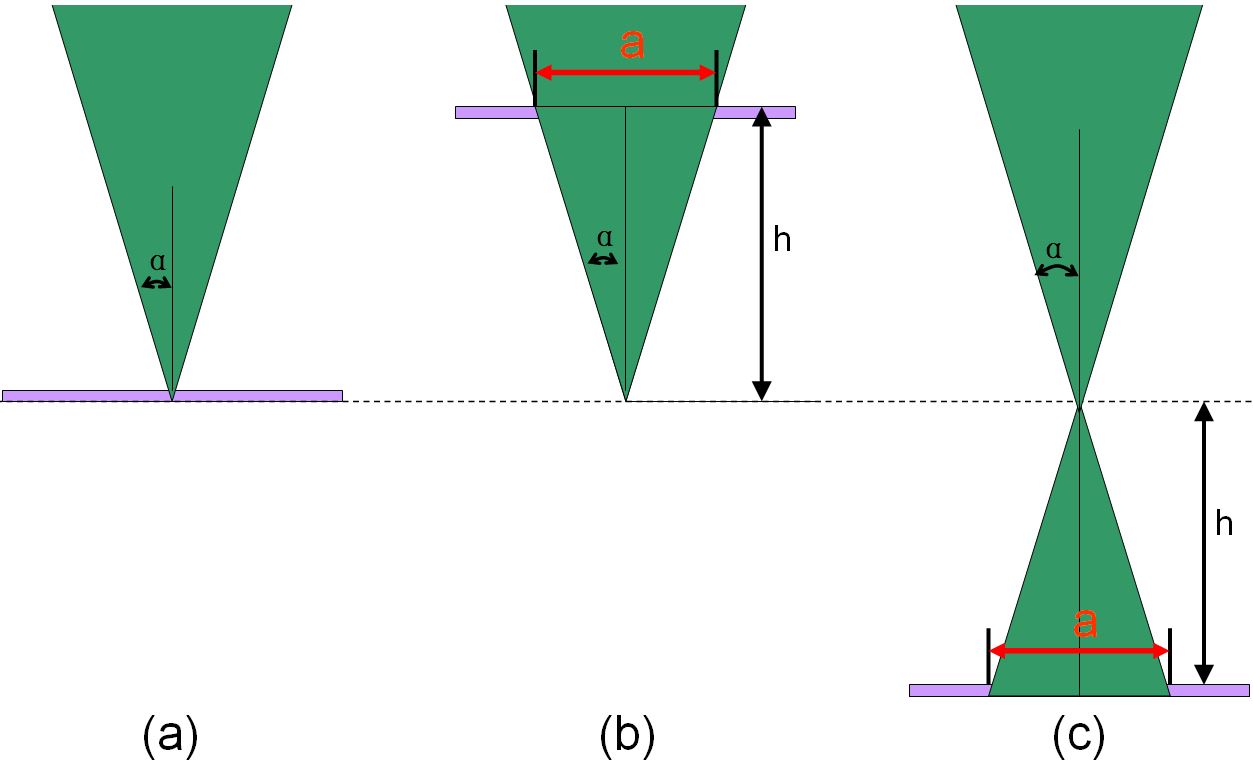=================================================================================
The spatial resolutions of EELS/EFTEM can be slightly worse than those of HAADF and TEM imagings primarily due to the specimen drifts during the slower acquisitions of the spectra or elemental mapping.
In analytical TEM analysis, specimen not only drifts in horizontal x- and y-directions but also in z-direction. In modern EELS mapping, the speciment drift in x- and y-directions can be corrected with user interface (UI) on software, e.g. Gatan DigitalMicrograph. Unfortunately, the drift in z-direction cannot be corrected during the measurement.
Furthermore, in analytical measurements, including EELS and EDS, convergent electron probe in STEM mode is used. Focus point of the beam does not move with time when the the specimen drifts up or down as shown in Figure 3509a. Therefore, the spatial resolution of such elemental mapping is degraded by specimen drift in the z-direction.
It is well-known that the spatial resolution of the measurements can be estimated by the diameter of the probe irradiation on the specimen. Assuming the specimen is infinitely thin, then the spatial resolution is given by:
 -------------------------------- [3509] -------------------------------- [3509]
where,
α -- The convergence semiangle,
h -- The drift height (see Figure 3509a).

| Figure 3509a. Spatial resolution affected by the specimen drift in the z-direction: (a) No drift (stays in focus), (b) Specimen drifts up, and (c) Specimen drifts down. |
For instance, a = 0.015·2h when the convergence semiangle α is 15 mrad, which is used in many TEM systems. Figure 3509b shows that the drift does not have significant effect on spatial resolution in short time, while it significantly degrades spatial resolution in long time data acquisition, e.g. EDS and EELS mapping of a large area. Therefore, in practice, STEM imaging can be done immediately after the region of interest in the TEM specimen has been localized since the acquistion just takes few seconds normally; however, we need to wait for stabilizing the specimen before starting the experiment if elemental mapping of a large area is needed because it takes a long acquistion time. It is necessary to mention that, in practice, the focus still needs to be corrected even though the specimen is stabilized after a while, since it still drifts randomly.
| Figure 3509b. Examples of drift effect on spatial resolution: (a) with short data acquisitions and (b) with long data acquisitions. |
|